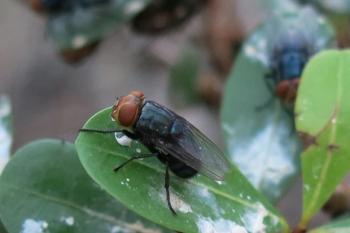
Surgical excision of pythiosis
Pythiosis is notorious for being difficult to remove with surgery alone. "Usually that's the case because complete surgical excision without damaging vital anatomical structures is often not practical in the locations that this organism likes to establish infection," says Mathew P. Gerard, BVSc, PhD, Dipl. ACVS, clinical professor of equine surgery at North Carolina State University. "The main point about surgery for pythiosis is that it has to be radical excision if you're going to be successful. Wide surgical margins of at least 2 cm are recommended."
Pythiosis is notorious for being difficult to remove with surgery alone. "Usually that's the case because complete surgical excision without damaging vital anatomical structures is often not practical in the locations that this organism likes to establish infection," says Mathew P. Gerard, BVSc, PhD, Dipl. ACVS, clinical professor of equine surgery at North Carolina State University. "The main point about surgery for pythiosis is that it has to be radical excision if you're going to be successful. Wide surgical margins of at least 2 cm are recommended."
Often, that approach is limited on limb surgery because of space limitations and nearby vital neurovascular structures, tendons or joints. You have a greater capacity to perform this excision on the ventral abdomen or thorax, where these lesions also have a tendency to develop. You've got to be prepared to carve out a large amount of tissue and deal with an open wound that is going to heal by second intention.
"If all the infected tissue is removed, surgery is often quite successful," Gerard says.
In a case Gerard had with an infection on the ventral abdomen, he was able to excise the mass en bloc, down to the external rectus sheath.
"One needs to take it all the way down as far as you feel comfortable you can go," he says. "That horse was fortunate infection had not extended deeper."
The same horse also had two locations on the palmar medial aspect of its right front leg, directly over the flexor tendons. Gerard took those masses out en bloc as well, with as wide a margin as he could. He could not close any of the tissue because of too much tension.
"Surgery was successful partly because we did an aggressive excision and eventually the wounds granulated, contracted and healed fine," Gerard explains. "I would almost always recommend adding the immunotherapy vaccination protocol to any surgical case in the off chance you might not be able to get it all out or are unable to because of the location of the mass on the body (as with a lower limb)," suggests Gerard. "I've added immunotherapy to any surgical case I've taken on, and maybe that contributes to the surgical success."
There are reports of using laser surgery to primarily excise lesions or as an adjunct to sharp excision. Gerard notes that using a laser improves hemorrhage control and allows photoablation of the wound bed to try and destroy any remaining organisms.
"I would use it particularly for smaller lesions that are easily completely ablated or after sharp excision of larger lesions if I am concerned about my margins," Gerard said.
Bottom line, Gerard indicates, is that surgical success is linked to early diagnosis of pythiosis.
"You are more likely to be able to successfully eliminate a lesion if you catch it early before it has extended into deeper tissues," he says.
— Ed Kane, PhD
Newsletter
From exam room tips to practice management insights, get trusted veterinary news delivered straight to your inbox—subscribe to dvm360.






